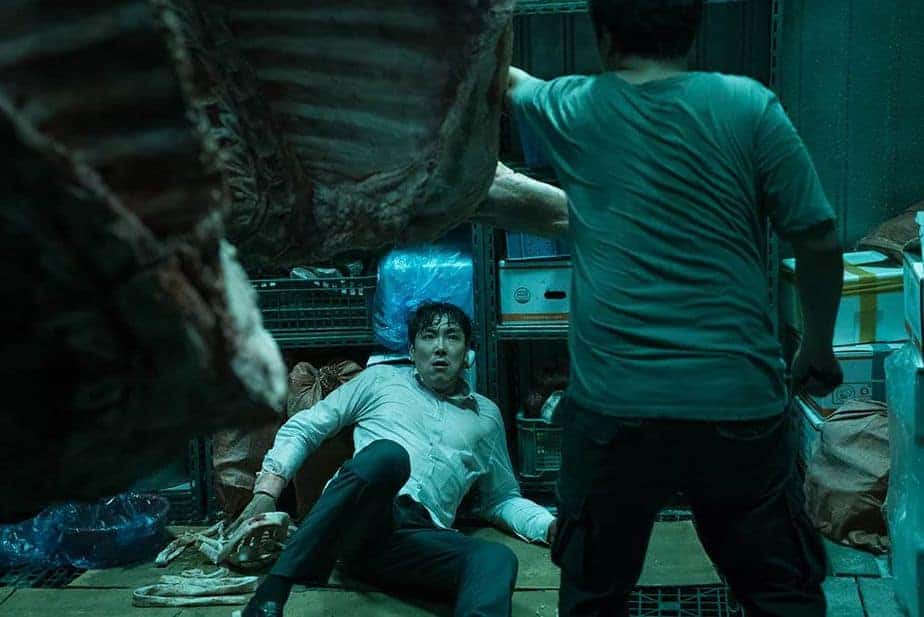By Raghu Pratap
Cinema in India's geopolitically and culturally distinct region, the ‘North East' finds its origins in the 1935 Assamese film – “Joymoti” directed by Jyoti Prasad Agarwala. In the decades hence, North East India – joined to the Indian mainland by a thin corridor of 22 kms, has seen the emergence of varied films imbued with a certain sense of realism, tracing back to the aforementioned work, with a depiction of the bleak and the everyday in a jarring contrast to the movies churned out by Bollywood. Filmmaker Jahnu Barua, best known for “Halodhia Choraye Baodhan Khai” or “The Catastrophe” (1987) – winner of the Silver Leopard at the Locarno Festival in 1988, establishes a distinct voice committed to realism, with his debut feature – “Aparoopa” (1982) which refers to the titular character – a lonely wife whose life within vacuous privilege, familial trauma, and unfulfilled desires of the past, plays out alongside an array of characters. For his debut title, Barua received the National Award for Best Feature Film in Assamese in 1983.
Barua sets his story in erstwhile British colonial era tea gardens in the tea-producing North East Indian state of Assam, juxtaposing it with the lives of rural folk surrounding the tea gardens. The narrative begins with a young captain in the army returning home to his ailing mother in the village. While consulting with the village doctor, he meets the owner of one of the tea estates who strikes up a friendship with him, impressed with his position in the Army. The affluent tea planter or Barua saheb later learns that his wife, Aparoopa, is a childhood friend of the young captain Rana.

The film furthers the rekindling of Rana and Aparoopa's bond from old, and Rana's assimilation into the elite tea garden life of jeep tours, or of drinking imported Scotch at weekend parties, and places them within the complexities in the relationship of the characters. Amidst all of this, the context of the village social life is enmeshed into the plot, as the characters undergo parallel lives, dilemmas and social situations while remarkably revealing their interactions with diverse sets of people, outside their insular meeting point. Barua saheb is seen driving around his jeep and in the company of Mr. Khanna, another tea planter, while Rana is seen talking to old friends and acquaintances from the village who are entangled in despairs of their own – of drunkenness or of societal stigma attached to their daughters.
Despite being the purported titular character, Aparoopa never really becomes one: there exists a secondary male gaze in the cinema through which we view her, not of the director's but that of Rana's and in this context, one may even analyse the title as a cry from Rana's heart or of her travails. Rana is the clear protagonist here, while Aparoopa, although demanding attention to several sequences that throw light on her joyless existence, never becomes a narrator of the motion picture. We ‘see' Aparoopa but she doesn't know she is being watched.
Jahnu Barua directs with a sensitive eye, in extending his gaze towards the plight of several ancillary characters, along with a careful understanding of the emotional undercurrents flowing within the protagonists that struggle to find expression. He finds frames that embody the spaces of rural beauty in the sunsets, cremations or walks by the rivers that create an adequate visual context of life around the place. In doing this, Barua who himself spent a considerable part of his childhood in and around tea gardens, attempts to understand the various societal strains plaguing women in the backdrop of class and patriarchal structures. However, he refrains from an outright critique, which is also indicated in the gaze toward Aparoopa: one of sympathy. Instead, he allows the plot to dictate. In his thematic concerns, and the locales that Barua frames, he exhibits the heavy influence of the Japanese masters: Mizoguchi, Ozu, etc. and particularly in his focus on external landscapes as with intimate framings of the interior, he feels closest to Mikio Naruse. While the women of Naruse's cinema are vocal, fiercely independent and harbour a sense of authorial control, Barua's debut falls well short, and navigates dangerously toward tropism. A more common thread lies in the interest of both the filmmakers in creating an equivalence of several characters proportionate to the expanse of the setting, in a manner characterized by decentralization: with characters such as Rana's helper finding a moment or two of filmic dignity. The architectural qualities of Assam Type Houses that often call to mind Taiwanese or Japanese architecture, more than the architecture of the Indian mainland, contributes to this consciousness.

However, there is no denying that “Aparoopa” is the work of an artist grounded in context with a keen sense of reality, of people in a rural Assamese setting in the tea gardens. Here, Barua also affords us a glimpse into the morning conversations of the village folk who banter albeit in the nature of perpetuating falsehoods and stigma.
There is a sense of moral ambiguity in the film, which works well in creating room to understand people's flaws at one level, but on another level, steers clear of taking a stand, ostensibly justified by the creation of sympathetic persons throughout the narrative. In this sense, the movie may be treated as one of resignation. In this context, South Korean master Lee Chang-dong is a fine example of a filmmaker of realist resignation. Whereas in Lee's work there is certain protest, Barua displays no presence of protest or disruption – making his work, in a way – status quoist. However, here: it is Aparoopa who has to repeatedly assert her space, as opposed to the men who are sympathetic but inert. And her assertion is aided by her class status as opposed to the ostracized young woman Radha who lives in the village. Similarly, Jahnu Barua is inert but calls for sensitivity and understanding.
Shot in 35 mm and in a 4:3 ratio, the movie, rather than boasting of individual frames of astonishing beauty, is the sum total of all of its frames, that complement each other in the service of the plot, with more than a few of its images evoking the natural landscape and the longing of the characters with profound colour and depth. Edited by Barua himself, “Aparoopa” consists of images that swiftly pass by, while recalling all the spaces visited by the film and creating a sense of attachment toward the world providing spatial context to the drama. The editing albeit exhibiting rudimentary touches never requires a sense of finesse attached to a certain kind of cinema, one that Barua's, thematically and stylistically differs from. The fragmented consciousness is thus subtly executed, with the flashbacks too, taking place without one's realization.
A leading actor of Assamese cinema at the time, Biju Phukan plays Rana with much restraint and caressing, and disappears into the understated nature of the character, and sometimes appears a tad too loyal to the script. In a short sequence however, in conversation with his drunken friend, he is easily overshadowed by Nipon Goswami. Suhasini Mulay plays the titular role of Aparoopa, and despite not being an Assamese actor well versed with the language, does a fine job in expressing her character. Playwright and director Girish Karnad makes an appearance as Mr. Khanna, along with noted actors like Kulbhushan Kharbanda and Farooq Shaikh making cameo appearances. Theatre actor Indra Bania, who would go on to act in Barua's “Halodhia Choraye Baodhan Khai” in 1987 and win the Best Actor at the Locarno Fest in 1988, also appears in a short sequence.
In the emergence of Jahnu Barua, “Aparoopa” remains a pivotal entry point in his oeuvre, a fine example of his inquiry into people and their circumstances, their quandaries within social and political concerns while evoking the distinct Assamese landscape – an unforgettable moment in his cinema, for both inhabitants of the geography and otherwise.















